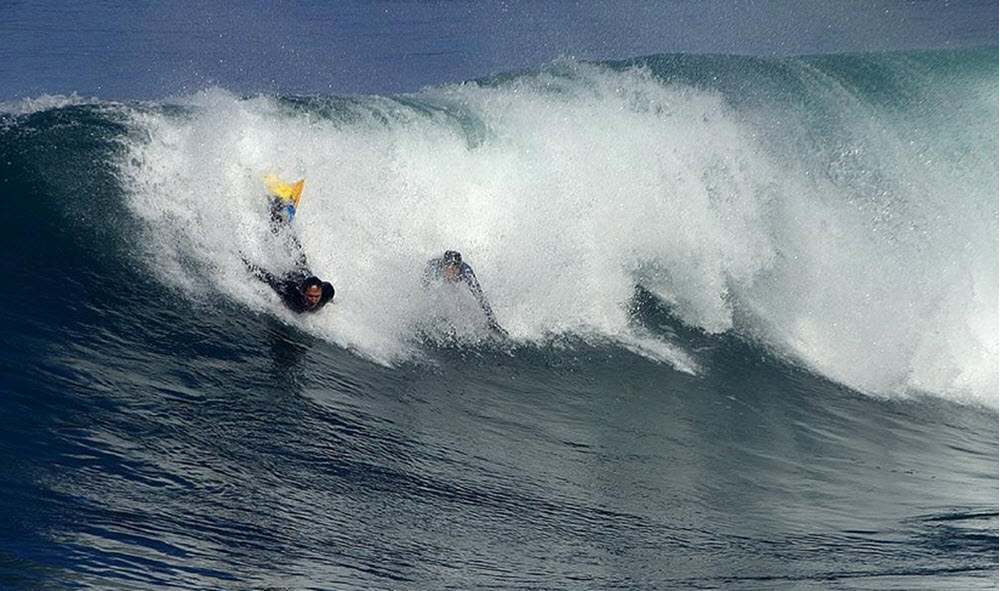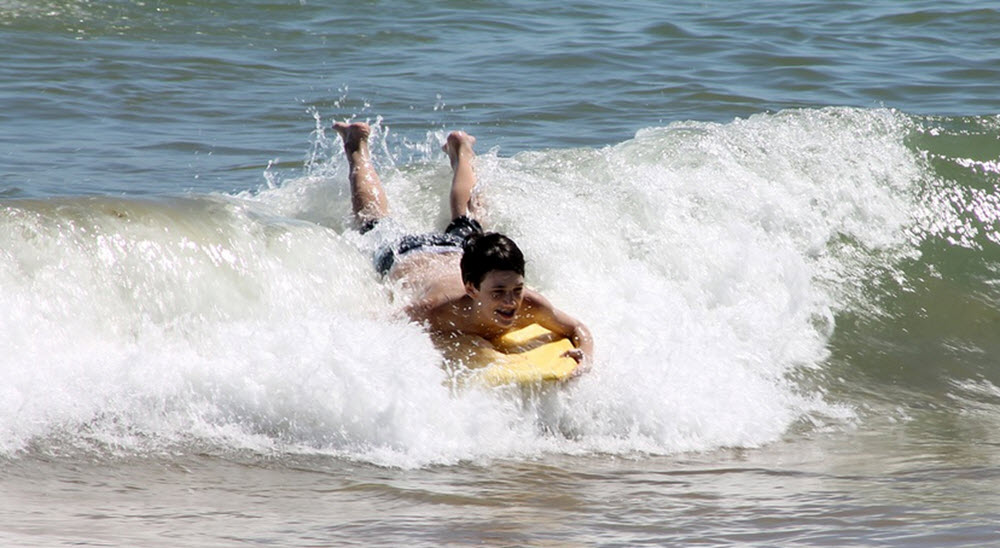Contents
Bodyboarding is water sport where you ride a bodyboard on a wave. The bodyboarder rides on both the crest, face and curl of the wave, and will be moved by the wave towards the shore.

The bodyboard
The typical bodyboard is a short (circa 40 inches / 1 meter), rectangular piece of hydrodynamic foam. This is the type that is most commonly available in shops, including tourist shops by the sea.
In speciality shops, you can find other versions, including high-qaulity bodyboards. Exactly how a bodyboard is made, both when it comes to design and material choices, will have a great impact on how it behaves in the water.
Details
Modern bodyboards usually consist of a foam core, a plastic bottom, a softer foam top (“the deck”), and softer foam sides (“the rails”).
Flexing
You want a bodyboard with the right amount of flex, as speed is increased when the bottom turns and the board flexes and recoils. A board that is inflexible, or one that flexes too easily, is bad for your ability to boost the speed in the water.
Bodyboards where the core is made from polyethylene tend to be fine in cold water, but become too flexible in warm waters. In warm waters, polypropylene is a better choice.
The fins
Many bodyboarders use swim fins to gain additional propulsion in the water. The fins also makes it easier to control the ride.
Riding forms
A bodyboard can be ridden in many different ways. Three common examples are prone position, drop-knee style, and stand-up.
Prone position
This is when you lay on your stomach. When you go left, you place your left hand on the upper left corner of the board-nose, and you right arm halfway down the right-side rail. When you go right, you do the opposite.

Drop-knee style
This is when you place one of your knees on the bottom end of the board, and have the foot (fin) dragging in the water. Your preferred foot (fin) should be forward on the front of the deck, and the opposing knee is the one that goes on the board.
This style is nicknamed Jack Stance, since it was popularized by Jack “The Ripper” Lindholm in Hawaii in the 1970s.
Stand-up
This position is typically only possible for skilled bodyboarders, and they tend to use it to perform various acrobatic tricks – both in the water and in the air. You stand upright on the board, a bit similar to how you would use a traditional surfboard.
Background
The indigenous inhabitants of Polynesia rode wooden alaia boards on their belly, knees or (rarely) feet. These boards had no ventral fins. Captain Cook’s report from Hawaii in 1778 includes descriptions of local villagers riding alaia boards that were 3 to 5 feet long and ridden in prone position or standing on ones knees.
The modern bodyboard craze started in the 1970s and spread from the United States to many other parts of the world.
